Amazing Facts About Carnivorous Plants
Updated: Jan. 26, 2024
Carnivorous plants consume other living creatures for their food. Learn facts about venus flytraps, pitcher plants and more.
What Is a Carnivorous Plant?
Simply speaking, a carnivorous plant is one that eats insects as part of its regular diet. All plants take in carbon dioxide and use sunlight to convert it to food to help them grow (that’s photosynthesis). But plants also require nutrients, which most of them get from the soil—it’s why many plants require regular fertilization. But carnivorous plants have evolved to grow in very poor soil conditions, and instead take in the extra nutrients they need by capturing and digesting insects.
Facts About Carnivorous Plants
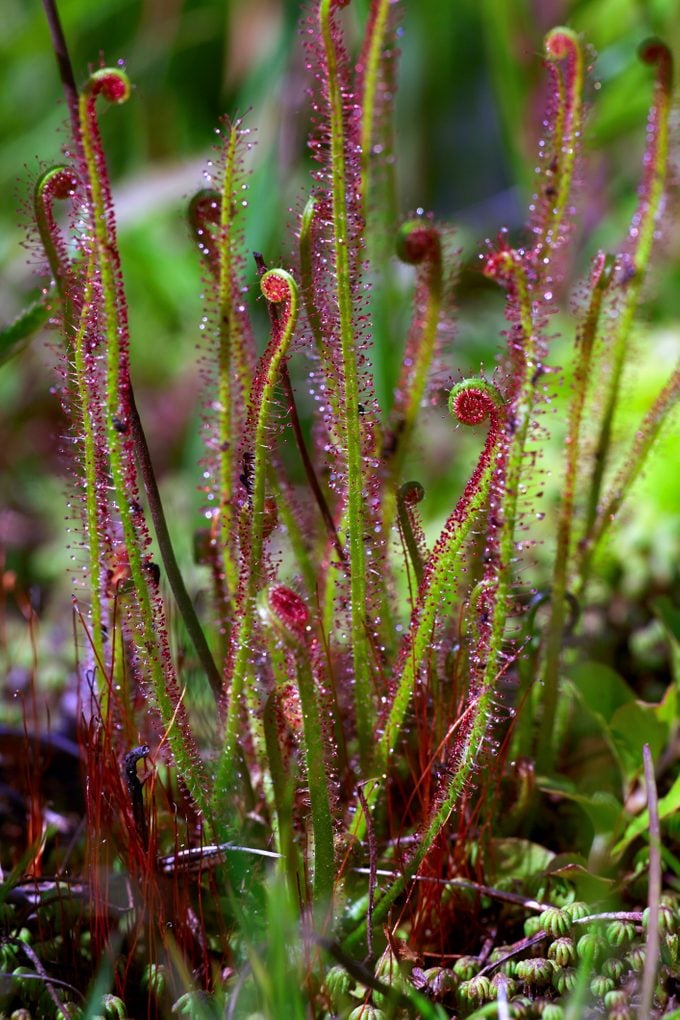
- Most of the 600 species of carnivorous plants can be divided into five types: pitcher plants, sundews, butterworts, bladderworts, and Venus flytraps.
- Carnivorous plants grow in wetlands where nutrients are scarce, so they turn to living creatures for their food.
- The comedy musical Little Shop of Horrors is about a man-eating plant named Audrey II and the bumbling florist who raises her.
- After a tiny insect touches a bladderwort’s trigger hairs and is sucked in to be devoured, it takes the plant only 30 minutes or less to reset its trap.
- Carnivorous plants usually throw their flowers high into the air so that the insects who do the pollinating don’t get stuck in the plants’ traps before they can get the job done.
Pitcher Plant Facts
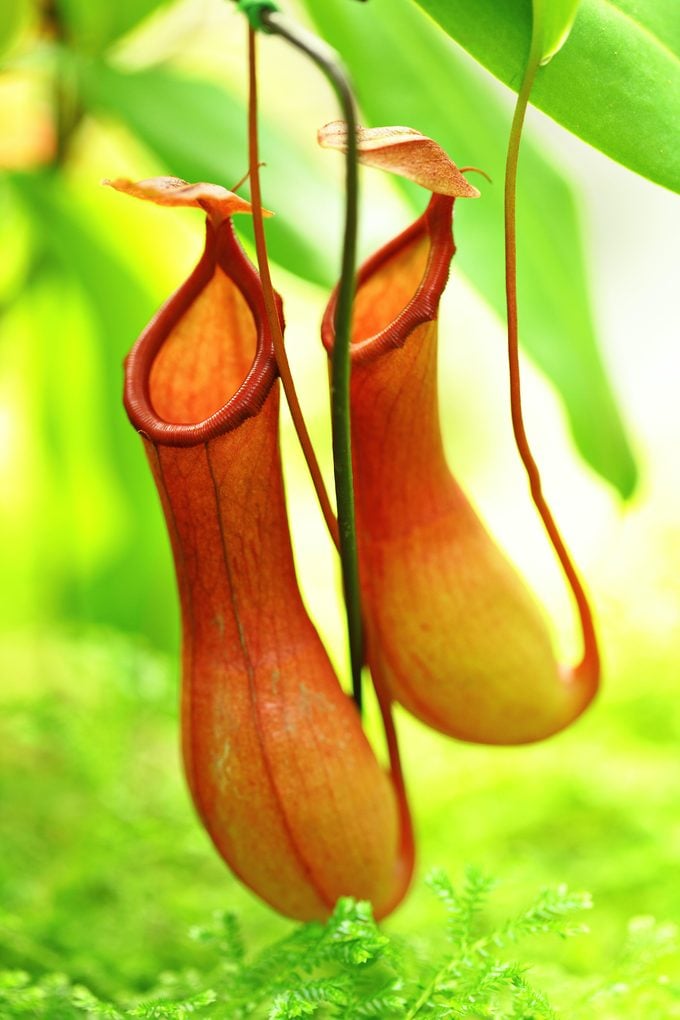
- White-top pitcher plants can grow up to 3 feet tall. And, thanks to their good looks, cultivated ones sometimes end up in floral arrangements.
- Their unusual downward facing flowers are often pollinated by flies.
- Pitcher plants trap prey with their specialized, tube-like leaves.
- Slice open a pitcher plant and you’ll discover crunchy remnants of gobbled-up prey. In one summer-long study over 250 insect species were found inside a single yellow pitcher plant at the end of the season.
- Pitcher plants die back to the ground in the winter. Their tall unusual flowers emerge first in the spring, before new traps begin to grow.
Venus Flytrap Facts
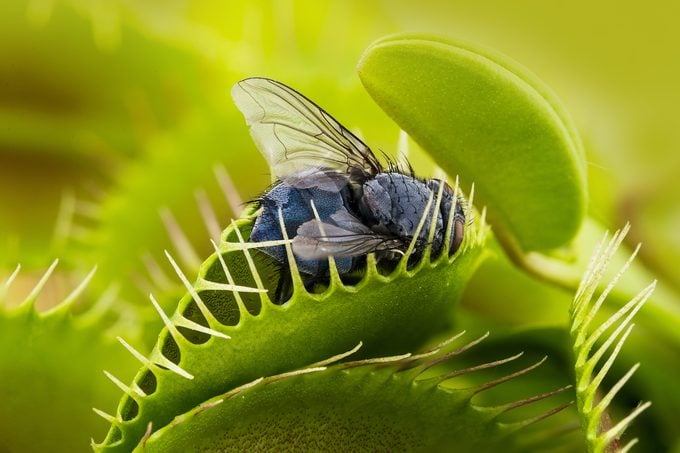
- Venus flytraps fascinated Charles Darwin. In his 1875 book, Insectivorous Plants, he described the Venus flytrap as “one of the most wonderful plants in the world.”
- Spiriting away Venus flytraps from the wild is now a punishable felony. Perpetrators can expect as much as 25 to 39 months of jail time.
Feeding Venus Flytraps
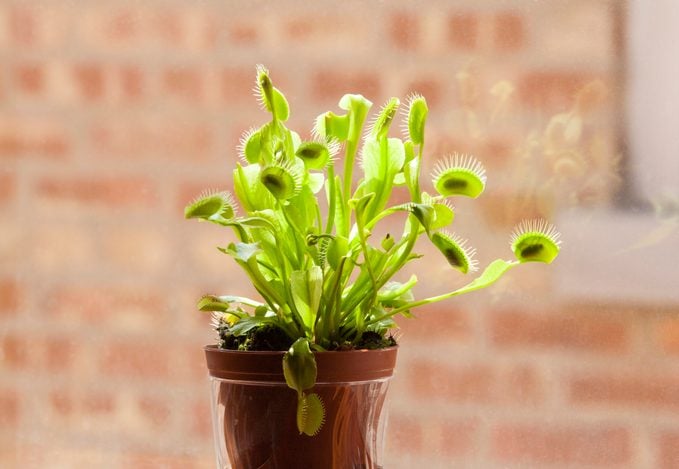
“How do I feed my Venus flytrap in winter when there are fewer flies? asks Birds & Blooms reader Nohemy Browand of Athens, Alabama.
Gardening expert Melinda Myers says, “Venus flytraps normally go dormant as the days shorten and temperatures cool. The taller stems often die, leaving only a few small leaves or the bulb. Don’t throw the plant away. Remove the dead growth and move the plant to a cooler location such as a basement. The soil should be moist year-round but not soaked.”
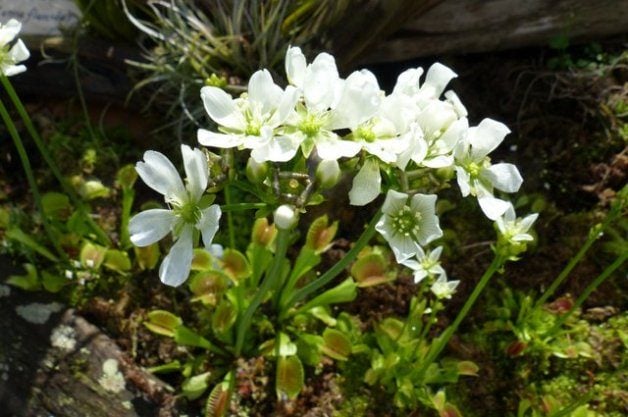
Melinda continues, “Feed actively growing Venus flytraps live insects that are small enough to allow the trap to fully close so it can digest the prey. Centipedes, fruit flies or beetles might be creatures that you can find in your home, even in winter. You can also purchase crickets and mealworms of the appropriate size at a pet store.”
